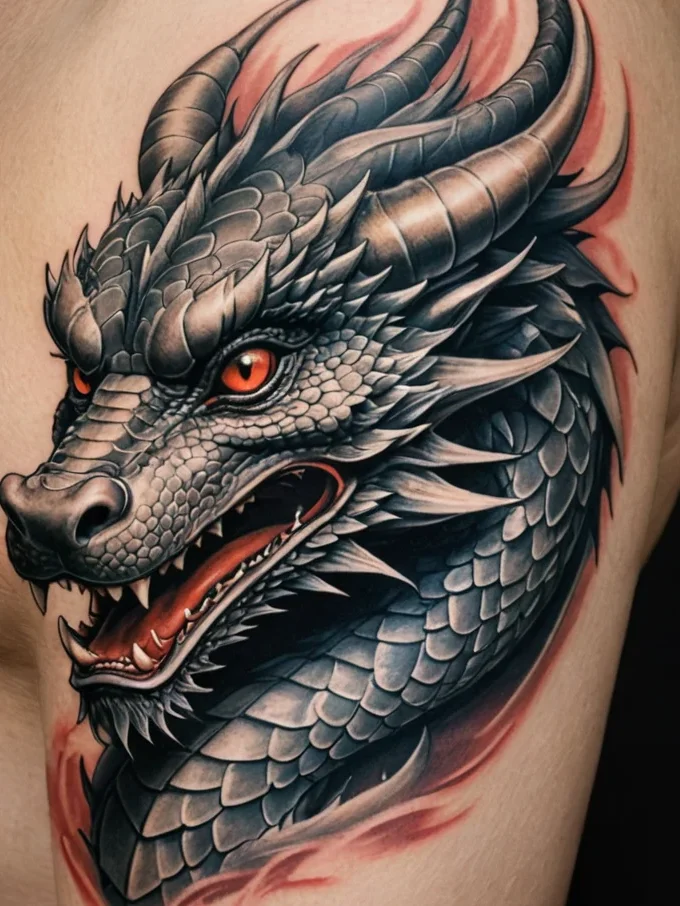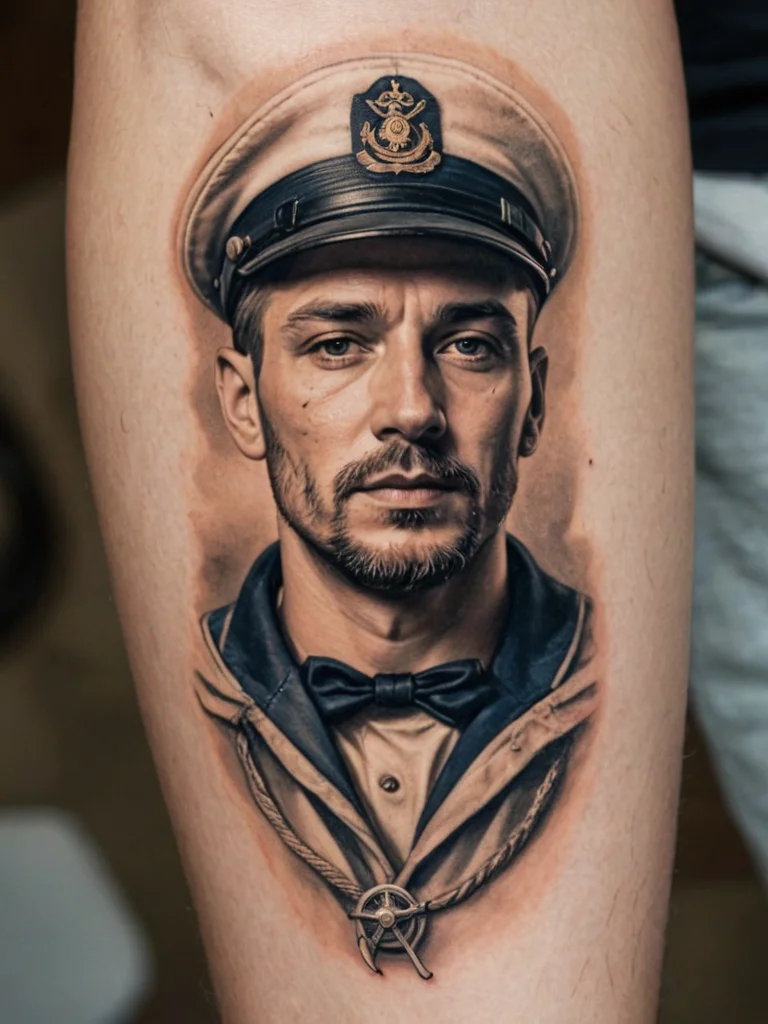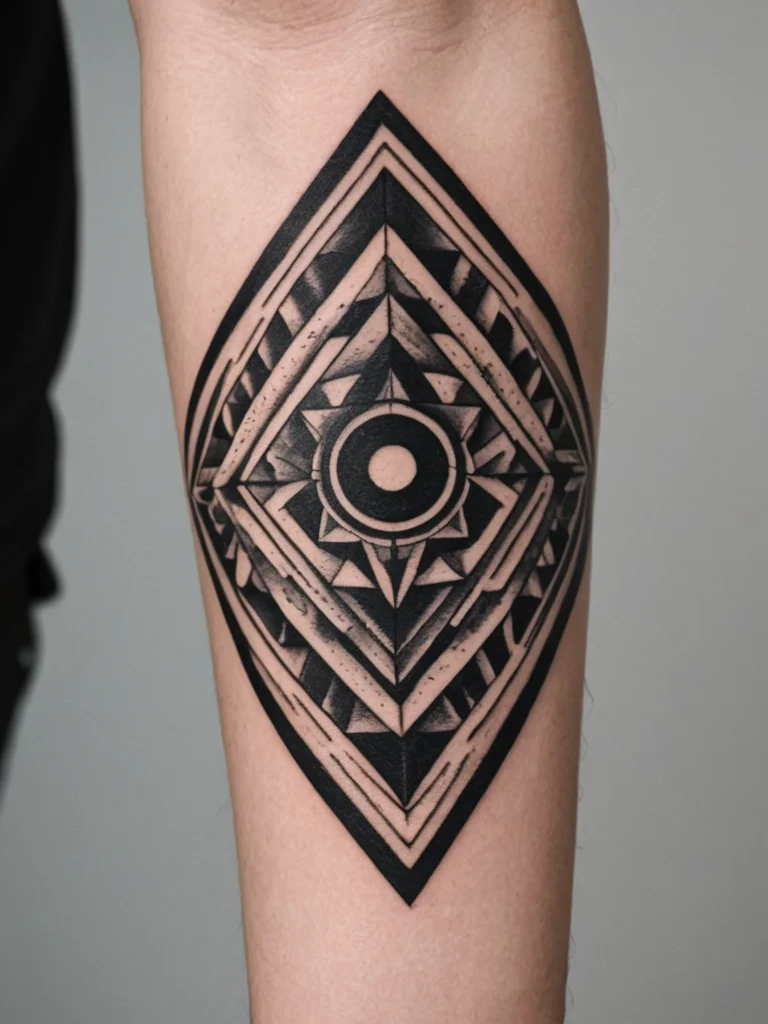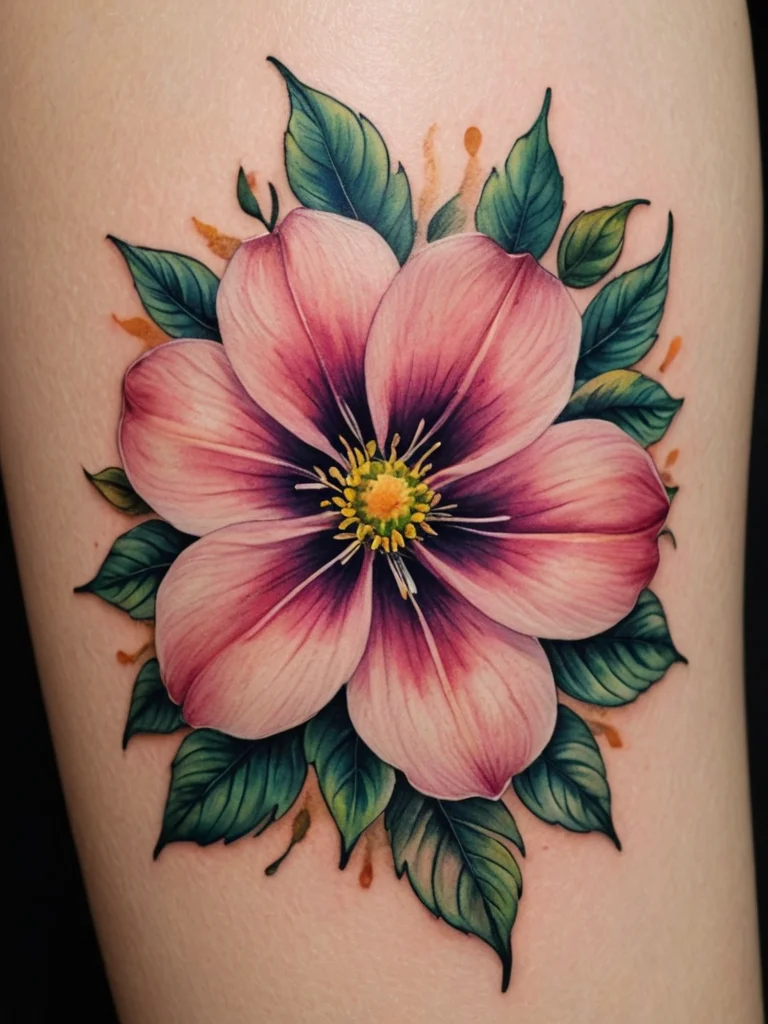Tattoo museums are more than just collections of ink and artifacts; they are vital institutions that safeguard the rich and complex history of tattooing. They serve as bridges connecting us to the past, allowing us to understand the evolution of this ancient art form, its cultural significance, and the stories of the people who have been marked by it throughout history. These museums offer a unique window into diverse cultures, artistic styles, and technological advancements that have shaped the world of tattooing as we know it today.
Introduction: Why tattoo museums matter and how they connect us to the past
Why are these museums so crucial? Imagine a world without historical records, a world where the stories of our ancestors are lost, and the art they created is forgotten. Tattoo museums prevent this from happening to the world of tattooing. They meticulously collect, preserve, and display artifacts related to tattoo history, including original tattoo designs, antique tattooing equipment, photographs, documents, and even tattooed human skin. These artifacts provide invaluable insights into the techniques, styles, and cultural contexts of tattooing in different eras and regions.
Consider, for example, the preservation of early electric tattoo machines. These machines, often crafted from repurposed medical equipment, represent a pivotal moment in tattoo history, marking the transition from hand-poked tattoos to electrically powered techniques. Tattoo museums showcase these machines, allowing you to appreciate the ingenuity of early tattoo artists and the impact of technological innovation on the art form.
Furthermore, tattoo museums often feature exhibits dedicated to specific tattoo traditions, such as the Irezumi of Japan, the Polynesian Tatau, or the traditional hand-tapped tattoos of Southeast Asia. By showcasing these diverse traditions, museums help you understand the cultural significance of tattooing in different societies and the ways in which it has been used to express identity, status, spirituality, and belonging.
The act of preserving tattoo history is also a way of honoring the artists and individuals who have contributed to its development. Tattoo museums tell their stories, celebrating their creativity, skill, and dedication to the craft. They provide a platform for recognizing the pioneers of tattooing and the artists who have pushed the boundaries of the art form.
A world tour of tattoo museums: Showcasing the diversity and evolution of tattoo art

Embark on a virtual world tour of tattoo museums and you’ll discover a fascinating tapestry of artistic styles, cultural traditions, and historical narratives. Each museum offers a unique perspective on the world of tattooing, reflecting the specific history and culture of its region.
Let’s begin in Amsterdam, home to the Tattoo Museum Amsterdam. This museum boasts a vast collection of tattoo artifacts from around the world, including vintage tattoo machines, flash sheets, photographs, and even tattooed human skin. The museum’s exhibits explore the history of tattooing in different cultures, from the ancient practices of indigenous tribes to the modern styles of contemporary artists. You can trace the evolution of tattooing techniques, from hand-poked methods to the use of electric machines, and learn about the symbolism and meanings of different tattoo designs.
Moving across the globe to Japan, you might find smaller, private collections focusing on Irezumi. While dedicated, publicly accessible tattoo museums are less common in Japan due to cultural sensitivities, the influence of Irezumi on tattoo history is undeniable. Exploring literature and online resources that document Irezumi provides insight into its rich history, symbolism, and artistry. Irezumi often depicts mythical creatures, historical figures, and scenes from folklore, reflecting the values and beliefs of Japanese society.
Next, consider museums that, while not exclusively dedicated to tattoos, feature exhibits related to body art and adornment. Museums of anthropology and ethnography often house collections of artifacts related to traditional tattooing practices in indigenous cultures. These artifacts may include tattooing tools, pigments, and examples of tattooed skin. By studying these collections, you can gain a deeper understanding of the cultural significance of tattooing in different societies and the ways in which it has been used to mark identity, status, and belonging.
The diversity of tattoo museums extends beyond their geographic location and the types of artifacts they display. Some museums focus on specific aspects of tattoo history, such as the development of tattoo technology or the evolution of tattoo styles. Others may specialize in the work of a particular artist or the tattooing traditions of a specific cultural group. This specialization allows you to delve deeper into specific areas of interest and gain a more comprehensive understanding of the world of tattooing.
Imagine a museum dedicated solely to the history of tattooing in the American circus. Such a museum would showcase the tattoos of circus performers, including tattooed ladies, strongmen, and sideshow freaks. You could learn about the role of tattooing in the circus subculture and the ways in which it was used to attract audiences and create a sense of spectacle. Or consider a museum dedicated to the history of tattooing in the military. This museum would explore the tattoos of sailors, soldiers, and other military personnel, examining the symbolism and meanings of these tattoos and the ways in which they reflected the experiences and identities of those who served.
Preservation techniques: How tattoo museums protect rare artifacts and historical records

Preserving tattoo history is a delicate and complex undertaking, requiring specialized knowledge and techniques. Tattoo museums employ a variety of methods to protect rare artifacts and historical records from deterioration, ensuring that they will be available for future generations to study and appreciate.
One of the most challenging aspects of tattoo preservation is the preservation of tattooed human skin. This material is highly susceptible to decay and requires careful handling and storage. Tattoo museums typically preserve tattooed skin using a variety of techniques, including taxidermy, embalming, and freeze-drying. Taxidermy involves treating the skin with chemicals to prevent decomposition and then mounting it on a frame. Embalming involves injecting the skin with a preservative fluid. Freeze-drying involves removing the moisture from the skin and then sealing it in an airtight container.
The preservation of tattoo designs and flash sheets also requires specialized techniques. These materials are often made of paper, which is vulnerable to fading, tearing, and insect damage. Tattoo museums typically preserve tattoo designs and flash sheets by storing them in acid-free folders and boxes, controlling the temperature and humidity of the storage environment, and using UV-filtering glass to protect them from sunlight. Digitization also plays a key role, allowing for high-resolution scans to be stored and accessed without risking damage to the originals.
Antique tattooing equipment, such as hand tools and early electric tattoo machines, also requires careful preservation. These objects are often made of metal, wood, and other materials that are susceptible to rust, corrosion, and decay. Tattoo museums typically preserve antique tattooing equipment by cleaning and lubricating the objects, storing them in a controlled environment, and using protective coatings to prevent further damage.
In addition to preserving physical artifacts, tattoo museums also play an important role in preserving historical records, such as photographs, documents, and oral histories. These records provide valuable insights into the lives of tattoo artists and their clients, the evolution of tattoo styles, and the cultural significance of tattooing in different societies. Tattoo museums typically preserve historical records by digitizing them, storing them in archival-quality containers, and making them accessible to researchers and the public.
Consider the challenges of preserving a collection of glass-plate negatives documenting early 20th-century tattoo artists. These negatives are extremely fragile and require careful handling to prevent breakage. Tattoo museums employ specialized archivists who are trained in the proper techniques for handling and storing glass-plate negatives. These archivists carefully clean the negatives, scan them to create digital copies, and store them in protective enclosures.
Another critical aspect of preservation involves meticulous documentation. Each artifact and record must be carefully cataloged and described, providing information about its origin, history, and significance. This documentation allows researchers and the public to understand the context of the artifact and its place in the larger history of tattooing. Furthermore, it ensures that future generations will be able to access and learn from these valuable resources.
Beyond the exhibits: How tattoo museums educate the public and support the tattoo community

Tattoo museums are not just repositories of artifacts; they are also dynamic centers for education and community engagement. They play a vital role in promoting understanding and appreciation of tattoo art, fostering dialogue about its cultural significance, and supporting the tattoo community.
One of the primary ways in which tattoo museums educate the public is through their exhibits. These exhibits provide a curated overview of tattoo history, showcasing the evolution of tattoo styles, the diversity of tattoo traditions, and the stories of tattoo artists and their clients. Museums use a variety of techniques to make their exhibits engaging and accessible, including interactive displays, multimedia presentations, and guided tours. For example, an exhibit on the history of Japanese Irezumi might feature interactive displays that allow visitors to explore the symbolism of different tattoo designs and learn about the techniques used to create them. A multimedia presentation might showcase the work of contemporary Irezumi artists and discuss the challenges they face in preserving this traditional art form.
In addition to their exhibits, tattoo museums often offer a variety of educational programs, such as lectures, workshops, and demonstrations. These programs provide opportunities for you to learn from experts in the field, develop your own artistic skills, and connect with other tattoo enthusiasts. A lecture on the history of tattooing in the Pacific Islands might explore the cultural significance of tattooing in different Polynesian societies and the ways in which it has been used to mark identity, status, and belonging. A workshop on traditional hand-poked tattooing techniques might teach you how to create your own tattoos using ancient methods.
Tattoo museums also play an important role in supporting the tattoo community. They provide a platform for tattoo artists to showcase their work, connect with potential clients, and learn from their peers. Many tattoo museums host tattoo conventions, workshops, and other events that bring together artists and enthusiasts from around the world. These events provide opportunities for networking, collaboration, and the exchange of ideas. Furthermore, museums often collaborate with tattoo artists on exhibitions and educational programs, providing them with a platform to share their knowledge and expertise.
Consider how a tattoo museum might host a series of workshops led by renowned tattoo artists. These workshops could cover a range of topics, from traditional tattooing techniques to modern styles and innovations. You could learn the basics of tattooing from a master of the craft, develop your own artistic skills, and gain valuable insights into the business of tattooing.
Furthermore, tattoo museums can serve as important resources for tattoo artists, providing access to historical records, archival materials, and expert advice. A tattoo artist researching the history of a particular tattoo style might consult the museum’s collection of flash sheets and photographs to gain inspiration for their own work. An artist seeking advice on how to preserve their own tattoos might consult with the museum’s conservators to learn about the best practices for tattoo aftercare.
Visiting a tattoo museum: What to expect and how to make the most of your experience

Visiting a tattoo museum can be a fascinating and rewarding experience, offering you a unique opportunity to learn about the history, culture, and art of tattooing. To make the most of your visit, it’s helpful to know what to expect and how to prepare.
Before you visit a tattoo museum, it’s a good idea to do some research. Find out about the museum’s exhibits, collections, and educational programs. Read reviews from other visitors to get a sense of what to expect. Check the museum’s website for information about hours, admission fees, and accessibility. This preparation will help you plan your visit and ensure that you get the most out of your experience.
When you arrive at the museum, take some time to orient yourself. Pick up a map and brochure, and familiarize yourself with the layout of the museum. Read the introductory panels in each exhibit to get a sense of the context and themes. Don’t be afraid to ask questions of the museum staff. They are there to help you learn and appreciate the exhibits.
As you explore the exhibits, take your time and observe the artifacts carefully. Read the captions and labels to learn about the history, culture, and significance of the objects on display. Pay attention to the details of the tattoo designs, the techniques used to create them, and the stories of the people who wore them. Consider the cultural context of the tattoos and the ways in which they reflected the values, beliefs, and identities of the individuals and societies that created them.
Participate in the museum’s educational programs, such as lectures, workshops, and demonstrations. These programs offer opportunities to learn from experts in the field, develop your own artistic skills, and connect with other tattoo enthusiasts. Ask questions, share your own experiences, and engage in thoughtful discussion. If possible, take a guided tour of the museum. A knowledgeable guide can provide valuable insights into the exhibits and answer your questions.
Remember that tattoo museums are often small and privately funded. Consider making a donation to support the museum’s mission of preserving and promoting tattoo history. You can also support the museum by purchasing items from its gift shop or becoming a member.
Imagine yourself walking through a museum dedicated to the tattoos of sailors throughout history. You see faded photographs of grizzled veterans, their arms adorned with anchors, mermaids, and swallows. You learn about the symbolism of these tattoos – the anchor representing stability, the mermaid representing allure and danger, the swallow representing a safe return home. You begin to understand the power of tattoos to tell stories, to commemorate experiences, and to connect individuals to a larger community.
By visiting a tattoo museum, you are not just looking at artifacts; you are engaging with a living history. You are learning about the art, culture, and traditions of tattooing, and you are contributing to the preservation of this important part of our shared human heritage. The experience can inspire you to think more deeply about your own tattoos, to appreciate the artistry and skill of tattoo artists, and to understand the cultural significance of this ancient and enduring art form. So, take the time to visit a tattoo museum and discover the fascinating world of ink and history that awaits you.